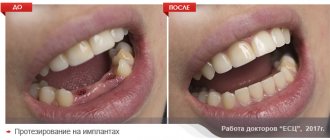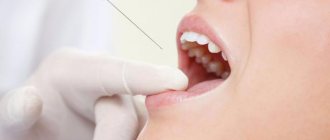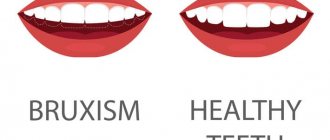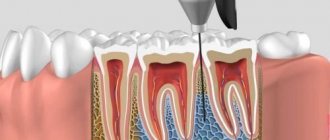Anesthesia is a method of anesthesia in which, after the administration of special drugs, not only the feeling of pain, but also consciousness is turned off.
According to current legislation, in Russia, children under three years of age must undergo dental procedures in the oral cavity under general anesthesia. Sanitation of the oral cavity for children over three years of age is carried out under any anesthesia that ensures painless procedures.
Among parents there is a diametrically opposite attitude towards anesthesia. Some advocate that this method of pain relief be used during even the most harmless procedure, so that the child does not suffer psychological trauma from dental intervention. Others, on the contrary, are distrustful of general anesthesia, regarding it as a health hazard. Let's look at the pros and cons.
Pediatric anesthesia in dentistry
First, let's figure out what anesthesia is. This is a reversible inhibition of the activity of the central nervous system, which we cause artificially.
Make an appointment
right now!
Yatskevich Elena Evgenievna
Pediatric dentist
Narcosis is characterized by:
- falling asleep and decreased reflexes;
- loss of consciousness and muscle relaxation;
- complete absence of painful sensations.
Translated into simple language, this means that during general anesthesia the child falls deeply asleep, lies motionless during the procedure and does not feel anything. And after waking up he doesn’t remember anything.
They are immersed in this state using a combination of several drugs, which ensures safety and comfort for the baby. At the same time, safety comes first. Modern methods of general anesthesia completely eliminate the negative impact on the mental and physical development of a small patient.
Unlike adult dentistry, in pediatric dentistry there is no intermediate option between superficial sedation and anesthesia. This means that for children under 16 years of age there are only two options for “sleep treatment”: superficial sedation, when the child remains awake during treatment, and general anesthesia (endotracheal anesthesia). This is due to the anatomical and physiological characteristics of children. Because of them, deep intravenous sedation is impossible.
Nitrous oxide
Dental treatment with nitrous oxide for children is the simplest and safest method of inhalation sedation, which relieves stress and moderate fear during dental procedures. The history of the use of ZAKS, a mixture of gases N2O and O2, goes back more than 150 years. This type of anesthesia is still used by dentists in Europe, America and Israel.
The child is in a relaxed state and in a good mood, while he is conscious and all his reflexes are preserved: he breathes independently, can move, and answer questions.
The sedative mixture is supplied in the following order:
- during direct communication, the doctor suggests wearing a mask, this may be part of some kind of game;
- first, the child breathes oxygen, then nitrous oxide is added to the mixture until it reaches a concentration of 30%;
- treatment is carried out under the control of devices;
- after the end, oxygen again replaces N2O;
- then the mask is removed.
After just 10 minutes, there are no traces of gas inhalation left in children's lungs.
Advantages of the method:
- complete absence of side effects;
- the action begins after a few breaths;
- the effect of inhaling the substance quickly disappears and the patient returns to his usual state;
- it is a safe alternative to deep anesthesia;
- the degree of sedation is easily controlled using modern electronic-automatic equipment.
- Disadvantages of the method
- These include the inability to use this type of anesthesia at a young age, when the child does not want (or resists breathing independently through a mask throughout the entire treatment) Therefore, the method is indicated for children over 5-6 years of age.
Nitrous oxide can be used in combination with local anesthesia to enable the administration and enhance the effect of painkillers.
Should children undergo dental treatment under anesthesia when they cry?
If your baby cries at the dentist, he may just be very emotional. And then, to calm him down, kind words are enough.
An experienced doctor knows how to find a common language with children, and there are usually no difficulties with treatment. There are many adaptive techniques when the doctor explains to the child in a playful manner that treatment is interesting and not painful at all. In addition, to cope with your baby’s fear, you can use the help of a psychologist.
If these methods do not help, then you can try the procedure under sedation. It muffles fear and temporarily dulls the baby's reactions.
Tears are not a good reason to perform dental treatment under anesthesia in children. It is worth resorting to it only if other methods of “agreeing” have not been successful. Anesthesia in pediatric dentistry is used if there are indications for it.
Treatment of baby teeth under anesthesia is carried out:
- if it is impossible to establish contact with the baby;
- dental treatment for children under 3 years of age;
- allergies to local anesthesia;
- mental illnesses or nervous system disorders: schizophrenia, epilepsy, Parkinson's disease, cerebral palsy, mental retardation;
- insurmountable fear of dental treatment (scientifically called dentophobia);
- strong gag reflex, which interferes with the treatment of distant teeth;
- extensive surgical operations: complex tooth extraction, abscesses, periostitis, lymphadenitis, serious jaw injuries.
When children should not use anesthesia for dental treatment:
✔
during the acute course of the infectious process;
✔
with decompensation of severe chronic diseases.
In general, there are no absolute contraindications to general anesthesia in children. Sometimes you just need to wait for the right moment or choose the most suitable technique. If the baby has an acute situation - pain or injury - there is always the opportunity to safely and comfortably undergo treatment under anesthesia.
Make an appointment
right now!
Yatskevich Elena Evgenievna
Pediatric dentist
Dental anesthesia for children: indications
General anesthesia in dentistry is prescribed to children in different cases:
- Panic fear of doctors, psychological reactivity. Even the best dentists sometimes put children under stress. The prerequisites are different - bad experience, peculiarities of the nervous system, dental phobia. Holding a patient by force and physically forcing him to treat his teeth is inhumane and only worsens the situation. Therefore, for anxious and fearful children, dental anesthesia is the best choice.
- A lot of work. In advanced dental cases, many units need treatment. In a state of medicated sleep, everything can be cured at the same time with minimal stress on the child.
- Difficult removal of teeth or tumors. Large surgical procedures are recommended to be performed under general anesthesia - painlessly and unnoticed by the patient.
- The impossibility of using another anesthesia option and standard treatment option is due to allergic reactions and a pronounced gag reflex.
- Neurological and psychiatric diagnoses. General anesthesia in dentistry is recommended for children with cerebral palsy, epilepsy, and Down syndrome.
The decision on medicinal sleep and treatment under a mask is made by doctors after a complete diagnosis of the oral cavity and assessment of associated factors.
How to prepare a child for dental treatment under anesthesia
- Before treatment, you should consult with an anesthesiologist. This can usually be done over the phone, but in some cases a face-to-face appointment is required.
To correctly administer general anesthesia, the anesthesiologist will need the following information:
- child development history;
- allergic reactions;
- past acute and chronic diseases;
- previous medical interventions and hospitalizations;
- anthropometric data (age, height, weight).
To clarify the child’s health status, you will need to undergo a series of tests. The anesthesiologist determines the full scope of the required examination based on the characteristics of the small patient and the type of upcoming treatment.
- Before anesthesia, diet is very important. The safety of anesthesia depends on its compliance.
The child who will best tolerate anesthesia is the one who:
- did not eat “heavy food” during the 6 hours preceding treatment;
- 4 hours before the procedure I had a snack;
- I drank water 2 hours before.
Dietary recommendations may vary, so the final meal plan will be discussed in consultation with the anesthesiologist.
- To help parents not be nervous, I also recommend asking the anesthesiologist what his qualifications are and what equipment he will use during the procedure. You definitely shouldn’t be embarrassed about such questions. Doctors with experience in pediatric anesthesiology should work with children, since the structure of the child’s body and its functioning have their own characteristics.
Permissible dosage of propofol for children
When administering Propofol to children, the dose is calculated by the anesthesiologist depending on the individual characteristics of the particular patient. But in general, the recommended dosage for children over 8 years of age is 2.5 mg/kg of body weight - for introducing medicated sleep. For children under 8 years of age, the dosage may be higher. The maintenance dosage of Propofol for children with deep sedation in dentistry averages 9-15 mg/kg per hour.
For children with severe illnesses, the dosage should be lower. The exact dosage in each specific case is determined and controlled by the anesthesiologist, taking into account the condition and susceptibility of the patient.
How is dental treatment performed for children under anesthesia?
During treatment under general anesthesia, the child does not feel anything. And he doesn’t remember anything after waking up. This is achieved by a combination of drugs. The main one among them is Sevoran.
The combination of drugs and their doses are calculated individually for each child. In this case, the doctor takes into account the age, weight and characteristics of the small patient. The use of combinations of anesthetics makes it possible to minimize their doses and carry out a high-quality and safe procedure.
The child falls asleep after a few breaths through the mask of the anesthesia machine. This happens in the arms of the mother. We perform induction of anesthesia as comfortably as possible for the baby. If a child comes with his favorite toy, we show her by example: inhalation from a mask is not scary.
In cases where parents warn the anesthesiologist that even a mask causes negative emotions in the child, premedication can be used. Then we administer a mild sleeping pill to the baby in the form of nasal drops, after which the child plays or watches cartoons for 30-40 minutes and gradually falls asleep in his mother’s arms. And then we begin induction of anesthesia.
An anesthesiologist and a nurse anesthetist are responsible for administering general anesthesia. Their interaction ensures the safety of the child. The baby is under constant control, precisely calculated doses of drugs are administered at the appropriate time. It takes approximately 30 minutes in addition to the treatment time for the anesthesiologist to induce anesthesia and wake up.
Stages of treatment
The course of treatment with Propofol includes several stages:
- Introduction to sleep. A child with his parents enters the dentist’s office, sits in a chair, is given a light anesthesia through a mask, and then Propofol is injected. The little patient falls asleep almost instantly.
- The necessary dental procedures are carried out - the dentist removes teeth, treats caries or pulpitis and performs other necessary manipulations. All the time, the anesthesiologist monitors the depth of sleep and the dosage of the drug administered using BIS monitoring, monitors the child’s condition, blood counts, incl. pressure, oxygen saturation, heart rate - using the most modern equipment.
- Awakening. The supply of the drug stops and most often the child wakes up after 10-15 minutes, but sometimes this takes a little longer - up to 30-40 minutes. The baby can safely get as much sleep as he needs in a separate room. After the final awakening and follow-up examination, the healthy child goes home with his parents.
In very rare cases, the patient experiences nausea and dizziness upon awakening, but such effects occur infrequently and pass very quickly. In addition, a long-term consequence of sedation in some patients may be a calmer (than normal) state for several hours after anesthesia.
What is rehabilitation like after treatment under anesthesia?
After waking up from anesthesia, in the vast majority of cases, children feel well. Most often, the only thing that bothers them is numbness in the areas where the local anesthetic was injected.
As for behavioral changes, there are three types:
- excitement - the baby may be capricious and cry. This is accompanied by increased activity. But it quickly gives way to fatigue;
- fatigue - the child wants to sleep, refuses to eat, sits in the arms of the parents;
- no behavioral changes after waking up.
The first two scenarios are typical for children under the age of 7-10 years, the third - for adolescents and adults.
Hyperactivity and agitation upon awakening are unpleasant for both the child and those around him. To avoid it, we try to implement the second scenario; to do this, we put the baby to sleep and wake him up gently.
The child can eat immediately after waking up, unless the anesthesiologist gives other recommendations.
Very rarely, recovery from anesthesia is accompanied by nausea or a feeling of motion sickness. This lasts no longer than 2-3 hours. This reaction is typical for children who get motion sickness in transport. In this case, you will be able to eat and drink within an hour or after the nausea has passed.
There is no need to worry about the postoperative period - the anesthesiologist will always be in touch.
Why are children at Aza&Buka not afraid of pain-relieving injections?
Treatment of primary teeth in children is most often performed under local anesthesia. And young patients react to it very positively, since at Aza&Buka doctors almost never use classic syringes and ampoule solutions. They have been replaced by modern instruments for painless administration of anesthetic:
- Needleless injector. Dental treatment is preceded by anesthesia with a high-quality drug through a tiny (up to 0.1 mm) hole under very high pressure. The jet instantly hits the tissue and guarantees a quick onset of the desired effect. There are no needles in the injector.
- A carpule syringe is a ready-made cartridge with an anesthetic, equipped with a special needle, which is significantly thinner than the needle of a regular syringe. Accurate dosage, perfect sterility and a minimum of discomfort are the advantages of this option.
- The computer syringe looks like a device from science fiction films and is very popular with children. The volume of anesthetic is controlled by software, allowing you to measure extremely precise doses for a pleasant treatment for the child.
Why choose Aza&Buka: the best pediatric dentist with anesthesia
In Moscow, many clinics provide dental treatment for children under general anesthesia and at different prices, but patients choose Aza&Buka. Reasons for visiting a pediatric dental clinic:
- Our own team of anesthesiologists - a doctor and assistants. The anesthesiologist consults the patient's parents before treatment begins and stays with the child while he sleeps. And be sure to wait until the baby fully recovers from anesthesia.
- Modern equipment, tools, drugs. The best sleep monitoring equipment allows you to monitor the depth and quality of anesthesia and the patient’s condition. The software calculation of the dose of the anesthesia drug is carried out according to the individual parameters of the child.
- Experienced specialists of any profile. At the Aza&Buka children's clinic, under anesthesia, a child is offered not only the treatment of caries, but also the elimination of pulpitis, removal of baby teeth, and prosthetic crowns when indicated.









